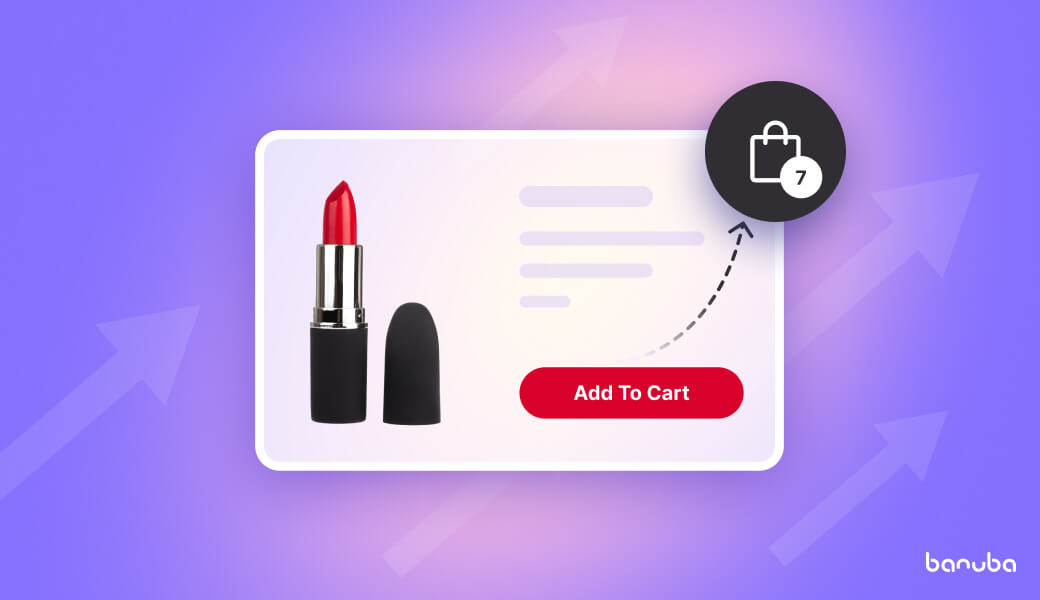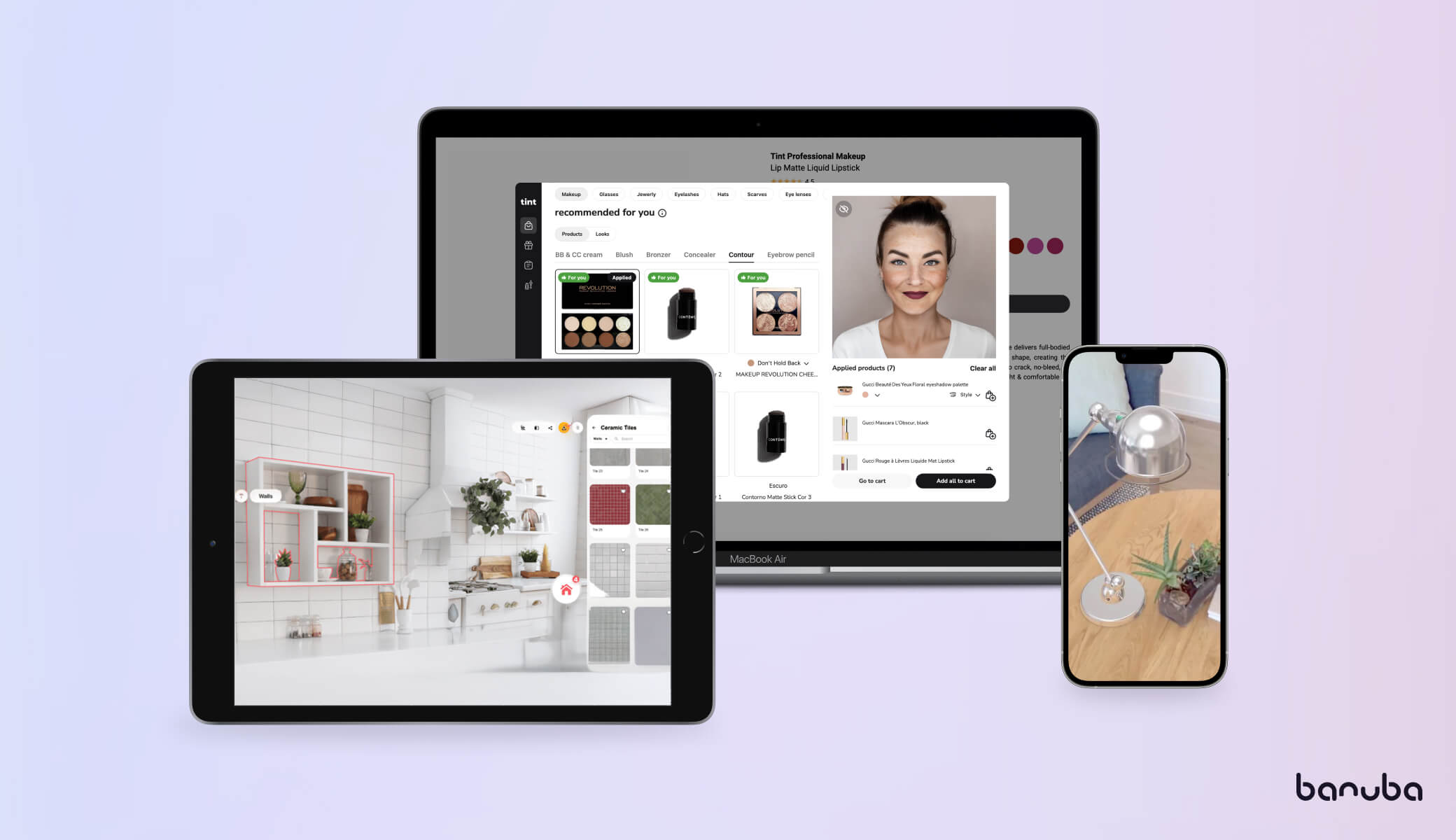[navigation]
Tl;DR
- Add-to-cart rate represents the percentage of product page visitors who add the item to their shopping cart. To calculate it, divide your add to cart actions by page views and represent the fraction as a percentile.
- An average rate that is considered “good” in eCommerce is 7.6%, varying by industry and other factors.
- These are some techniques you can try to increase add-to-cart rate:
- Enhancing product descriptions
- Using clear, detailed, and high-quality images
- Applying discounts and special offers to create a sense of urgency.
- Users appreciate a smooth shopping experience, so consider a rework of your checkout processes and overall UX/UI.
- As users seek social proof, especially when shopping, showcase product reviews and ratings.
- Try implementing augmented reality (AR) technology that allows users to try products on their device screens before buying. TINT is a great example of high-quality virtual try-on software. This realistic experience significantly boosts add-to-cart rates and conversions.
Add-to-cart conversion rate in a nutshell
Add-to-cart rate is a percentage of your website visitors that added at least one item to their shopping cart – regardless of whether they end up making a purchase.
 How to calculate add-to-cart rate
How to calculate add-to-cart rate
For example, if a product was added to the cart 100 times and the product page was viewed 1000 times, the add-to-cart rate would be:
Add-to-Cart Rate = 100 / 1000 = 0.1 or 10%
The add-to-cart rate benchmark can be anywhere from 3% to 10%. It differs depending on the industry, price level (luxury goods have a lower rate), location, and other factors. The average global value is 7.6%.
 Add-to-cart rate benchmark
Add-to-cart rate benchmark
Why track the add-to-cart rate?
Monitoring this indicator brings many benefits:
Conversion optimization. By monitoring the add-to-cart rate, businesses can identify products that turn visitors into customers more effectively. This information can help tune product pages, pricing, and marketing strategies to improve overall sales.
User experience. Monitoring the add-to-cart rate can provide insights into the user experience on the website, such as whether product descriptions, images, or checkout processes are effective in encouraging users to add items to their cart. Once you are aware of your typical customer journey, you can go on and implement user experience boosters such as virtual try on technology - keep reading to learn more.
Marketing effectiveness. If you are running a campaign for a specific product, seeing more people adding it to their shopping cart shows how effectively the promotional budget is being spent. You can also use this data to focus on specific high-impact campaigns or better selling products.
Abandonment insights. Tracking the add-to-cart rate can also help businesses identify potential reasons for cart abandonment, such as high shipping costs, complex checkout processes, or lack of payment options.

How to increase the add-to-cart rate
This is how you can boost the add-to-cart rate and gain the associated benefits:
Improve product descriptions and images. Make sure that your product descriptions are clear, detailed, and highlight the key features and benefits of the product. High-quality images that showcase the product from multiple angles can also help increase the add-to-cart rate.
Add virtual try-on. You can integrate augmented reality (AR) technology to let your users test products on their smartphone/tablet screen before committing to a purchase. The realism of the simulation is a powerful motivator, massively increasing the add-to-cart rate and conversions. For example, Océane, a Brazilian beauty brand, implemented cutting-edge virtual try-on for concealers and foundations. As a result, their KPI went through the roof: from 3% industry average to over 20%.
Offer discounts or promotions. Providing free shipping, temporarily lowering item prices, or other promotions can incentivize customers to add items to their cart. Limited-time offers or flash sales can create a sense of urgency and encourage customers to buy.
Simplify the checkout process. A complicated or lengthy checkout process can deter website visitors from actually buying. Reduce the number of steps required and offer guest checkout options to make adding items to cart and completing the purchase as easy as possible.
Implement a cart abandonment strategy. Many customers add items to their cart but do not go through with the purchase. Implementing a cart abandonment strategy, such as sending follow-up emails with reminders or offering discounts that encourage customers to take the final step can help increase the add-to-cart rate – and sales as well.
Provide customer reviews and testimonials. People like social proof. Including customer reviews and testimonials on product pages can help build trust and credibility with potential customers. Positive reviews can reassure customers that they are making a good purchasing decision, increasing the likelihood that they will add items to their cart.

Using virtual try-on platform TINT to improve add-to-cart conversion rate
TINT is an advanced virtual try-on platform that allows users to test products whenever and wherever it’s convenient for them. It supports many types of goods:
- Makeup
- Skincare
- Jewelry (incl. rings and bracelets)
- Glasses/sunglasses
- Colored contacts
- Hair dye
- Headwear
- Nail polish
TINT realistically simulates interactions with light and gravity. It also works with all skin tones, making it a useful addition to an online store in any country of the world.
Realistic virtual try-on gives prospective buyers confidence in the goods they are testing. This directly leads to adding more items to the cart.
However, TINT has another ace up its sleeve – AI recommendations system. It analyzes each individual’s appearance (face shape, skin tone, eye color, etc.) to suggest the products that fit this person the most. AI recommendations system can work in real time or on a still image, which means a buyer can select fitting goods for someone else (e.g. as a gift).
The personalization such system provides helps motivate users to add items to their cart and buy them. Additional benefits include up to 200% increase in sales and up to 30% higher average order value.
Conclusion
Add-to-cart rate is an important metric, letting you check the overall health of your online business. It allows eCommerce businesses to optimize conversions, streamline marketing efforts, and improve user experience. To improve add-to-cart rate, you can focus on making better product descriptions, implementing cart abandonment strategies, or adding virtual try-on experiences. TINT offers the latest in AR technology and personalized AI recommendations, also boosting other key metrics like conversions and average order value.





 How to calculate add-to-cart rate
How to calculate add-to-cart rate Add-to-cart rate benchmark
Add-to-cart rate benchmark




